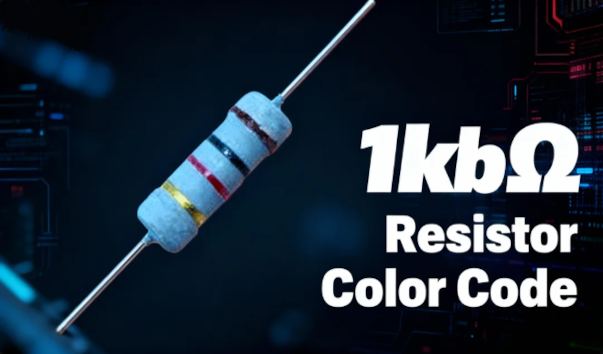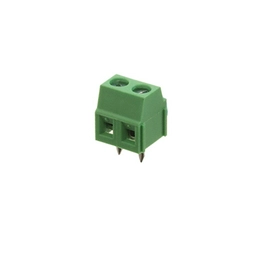Terminal Blocks & Connectors
Terminal Block Connectors
Definition:
Terminal block connectors, also known as terminal strips or terminal blocks, are electrical components designed to provide a means of connecting wires or cables to a circuit. They are commonly used in various applications to facilitate the easy and secure connection of multiple conductors.
Function:
The primary function of terminal block connectors is to create a junction point for electrical wiring. They allow for the safe and organized connection of multiple wires to a single point, which can then be connected to other components or devices. Terminal blocks are designed to handle various wire gauges and can be used in both indoor and outdoor applications, depending on their construction and environmental ratings.
Applications:
Terminal blocks are used in a wide range of applications, including:
1. Industrial automation and control systems
2. Electrical panels and switchgear
3. Home and commercial electrical installations
4. Telecommunications infrastructure
5. Renewable energy systems, such as solar panels and wind turbines
6. Automotive and marine electrical systems
Selection Criteria:
When selecting terminal block connectors, consider the following criteria:
1. Wire Gauge Compatibility: Ensure the terminal block can accommodate the wire gauges you plan to use.
2. Current Rating: Choose a terminal block with a current rating that exceeds the maximum current expected in the circuit.
3. Environmental Rating: If the terminal block will be used in harsh environments, select one with appropriate protection ratings (e.g., IP ratings for moisture and dust resistance).
4. Mounting Options: Consider the mounting requirements, such as panel mount, DIN rail mount, or surface mount.
5. Number of Poles: Select a terminal block with the appropriate number of poles for the number of wires you need to connect.
6. Material and Construction: Look for materials that provide durability and resistance to corrosion, especially for outdoor applications.
7. Safety Features: Some terminal blocks come with safety features such as built-in dielectric insulation or locking mechanisms to prevent accidental disconnection.
In summary, terminal block connectors are essential for organizing and securing electrical connections in various applications. When selecting a terminal block, it is crucial to consider compatibility with wire gauges, current ratings, environmental conditions, mounting options, the number of poles, and safety features to ensure a reliable and secure connection.
Please refer to the product rule book for details.
Definition:
Terminal block connectors, also known as terminal strips or terminal blocks, are electrical components designed to provide a means of connecting wires or cables to a circuit. They are commonly used in various applications to facilitate the easy and secure connection of multiple conductors.
Function:
The primary function of terminal block connectors is to create a junction point for electrical wiring. They allow for the safe and organized connection of multiple wires to a single point, which can then be connected to other components or devices. Terminal blocks are designed to handle various wire gauges and can be used in both indoor and outdoor applications, depending on their construction and environmental ratings.
Applications:
Terminal blocks are used in a wide range of applications, including:
1. Industrial automation and control systems
2. Electrical panels and switchgear
3. Home and commercial electrical installations
4. Telecommunications infrastructure
5. Renewable energy systems, such as solar panels and wind turbines
6. Automotive and marine electrical systems
Selection Criteria:
When selecting terminal block connectors, consider the following criteria:
1. Wire Gauge Compatibility: Ensure the terminal block can accommodate the wire gauges you plan to use.
2. Current Rating: Choose a terminal block with a current rating that exceeds the maximum current expected in the circuit.
3. Environmental Rating: If the terminal block will be used in harsh environments, select one with appropriate protection ratings (e.g., IP ratings for moisture and dust resistance).
4. Mounting Options: Consider the mounting requirements, such as panel mount, DIN rail mount, or surface mount.
5. Number of Poles: Select a terminal block with the appropriate number of poles for the number of wires you need to connect.
6. Material and Construction: Look for materials that provide durability and resistance to corrosion, especially for outdoor applications.
7. Safety Features: Some terminal blocks come with safety features such as built-in dielectric insulation or locking mechanisms to prevent accidental disconnection.
In summary, terminal block connectors are essential for organizing and securing electrical connections in various applications. When selecting a terminal block, it is crucial to consider compatibility with wire gauges, current ratings, environmental conditions, mounting options, the number of poles, and safety features to ensure a reliable and secure connection.
Please refer to the product rule book for details.
Categories
Featured Products
Datasheets
Article

Nanofarad Capacitors: Basics and Applications
Table of Contents + 1.What Is a Nanofarad Capacitor (nF)? 1.1.Definition of nF 1.2.Capacitance Unit Hierarchy (pF → nF → µF) 1.3.What Is a Nano Capacitor? 1.4.Why are nF values commonly used in circuits? 2.nF, µF, pF Conversion Guide 2.1.What is 1 nF equal to? 2.2.Is 100 nF equal to...
Learn More >
Complete Button Cell Sizes and Compatibility Guide
Table of Contents + 1.Understanding Button Cells: Definition and Core Principles2.Mastering Button Cell Naming Conventions and Sizing Standards 2.1.The IEC 60086-3 Standard: The Rosetta Stone of Button Cell Naming 2.2.Essential Button Cell Size Chart: IEC Cross-Reference3.Major Button Cell Chemistries: Performance and Application Comparison 3.1.Lithium Batteries (CR/BR/LIR): The 3V Standard and Discharge Prof...
Learn More >

1kΩ Resistor Color Code: Bands, Selection & App
Table of Contents + 1. What is a 1kΩ Resistor? 1.1. Resistance Value Definition and Identification 1.2. What the “1kΩ” Value Means in Circuits 1.2.1. Limit current to protect sensitive components (LEDs / sensors) 1.2.2. Forming a Voltage Divider to Obtain Precise Intermediate Voltage 1.2.3. Impedance Ma...
Learn More >
































